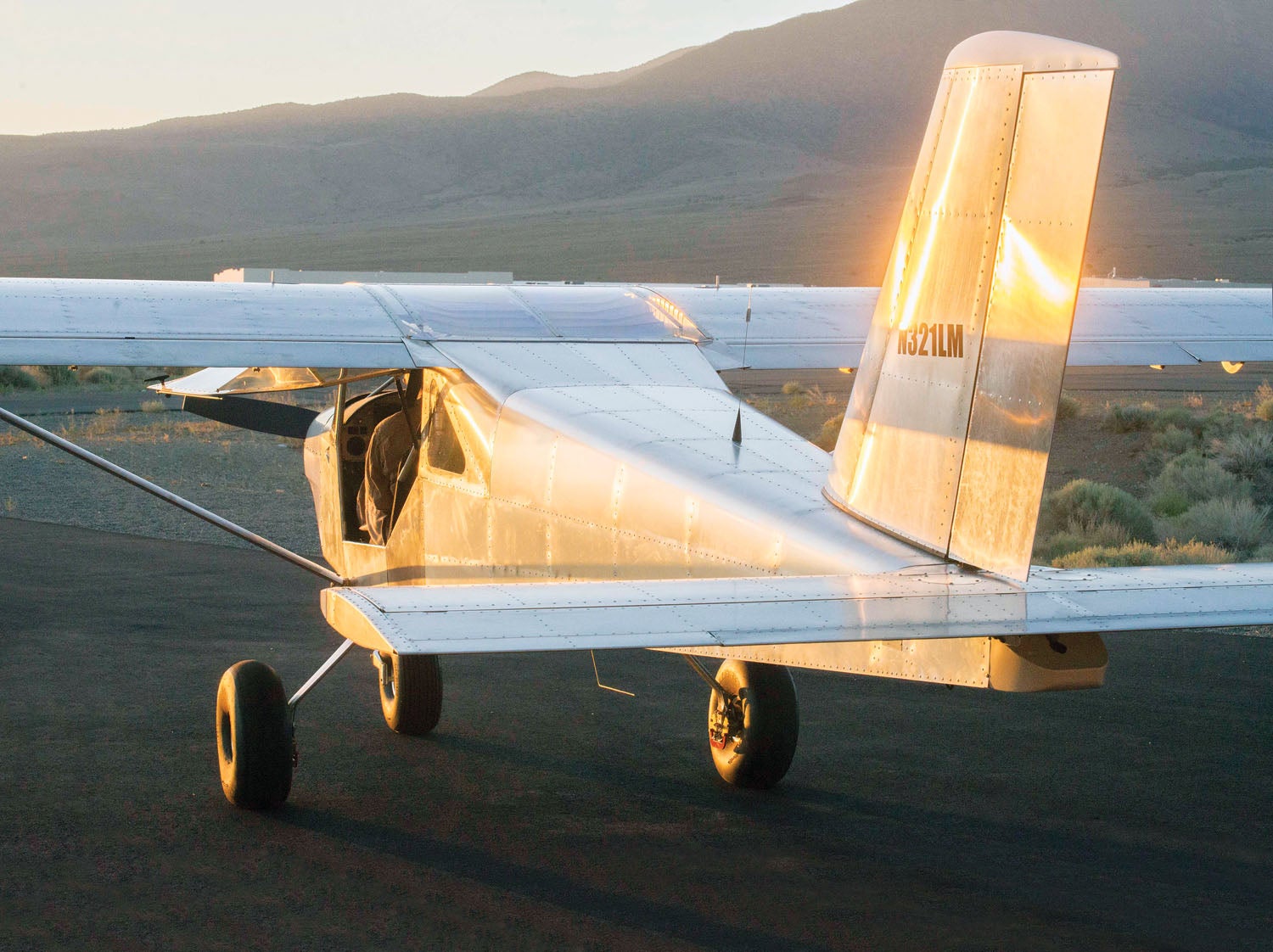 We have finally arrived at the “last 10%” of our RANS S-21 Outbound build—our to-do list whittled to a handful of items. In many ways, the focus shifts to administrative functions prior to the airworthiness inspection. Mike was dialed in because of the RV-10 build; he remembered all the hoops that have to be jumped through. But I was not involved in the process, so this was a completely new experience for me!
We have finally arrived at the “last 10%” of our RANS S-21 Outbound build—our to-do list whittled to a handful of items. In many ways, the focus shifts to administrative functions prior to the airworthiness inspection. Mike was dialed in because of the RV-10 build; he remembered all the hoops that have to be jumped through. But I was not involved in the process, so this was a completely new experience for me!
Mike ordered several documents from EAA to help us prep for the airworthiness inspection and the Phase I testing of the airplane. The Step-by-Step Certification Guide from EAA is a great resource; it really is a must for anyone going through this process because there are so many forms to fill out. The guide gives you tips on how to complete the forms so the FAA does not reject them, which causes the process to go on even longer. Dealing with the FAA is typical of a governmental agency in that if the form is not filled out perfectly, it will be rejected as a whole.
Mike knew that when we saw the date approaching that we felt we would be ready for inspection, about six weeks out, we should be in contact with a designated airworthiness representative (DAR). We chose the one who did the inspection on our RV-10 when we were living in California, Richard Dilbeck, or just “Dilly.” With his assistance and the EAA Certification Guide, we were able to fill out all the registration and paperwork. He reviewed it and caught a few things that we corrected prior to sending the forms to the FAA. It was good that we contacted him early because Dilly needed to get approval from the local Nevada FSDO to do the inspection in Nevada, which took some time. One of our forms was rejected by the FAA for not having both of our signatures notarized, and as time was getting critical, Mike had King Aircraft Title hand-deliver our package to the FAA (paying $50 for the service) so that our completed forms could be processed promptly.
Then there’s insurance. We have worked with Scott “Sky” Smith for many years. He took care of us and set us up with insurance that was the best fit for us. Consideration had to be given to being insured for transition training and being covered for first flight as well as for continued coverage.
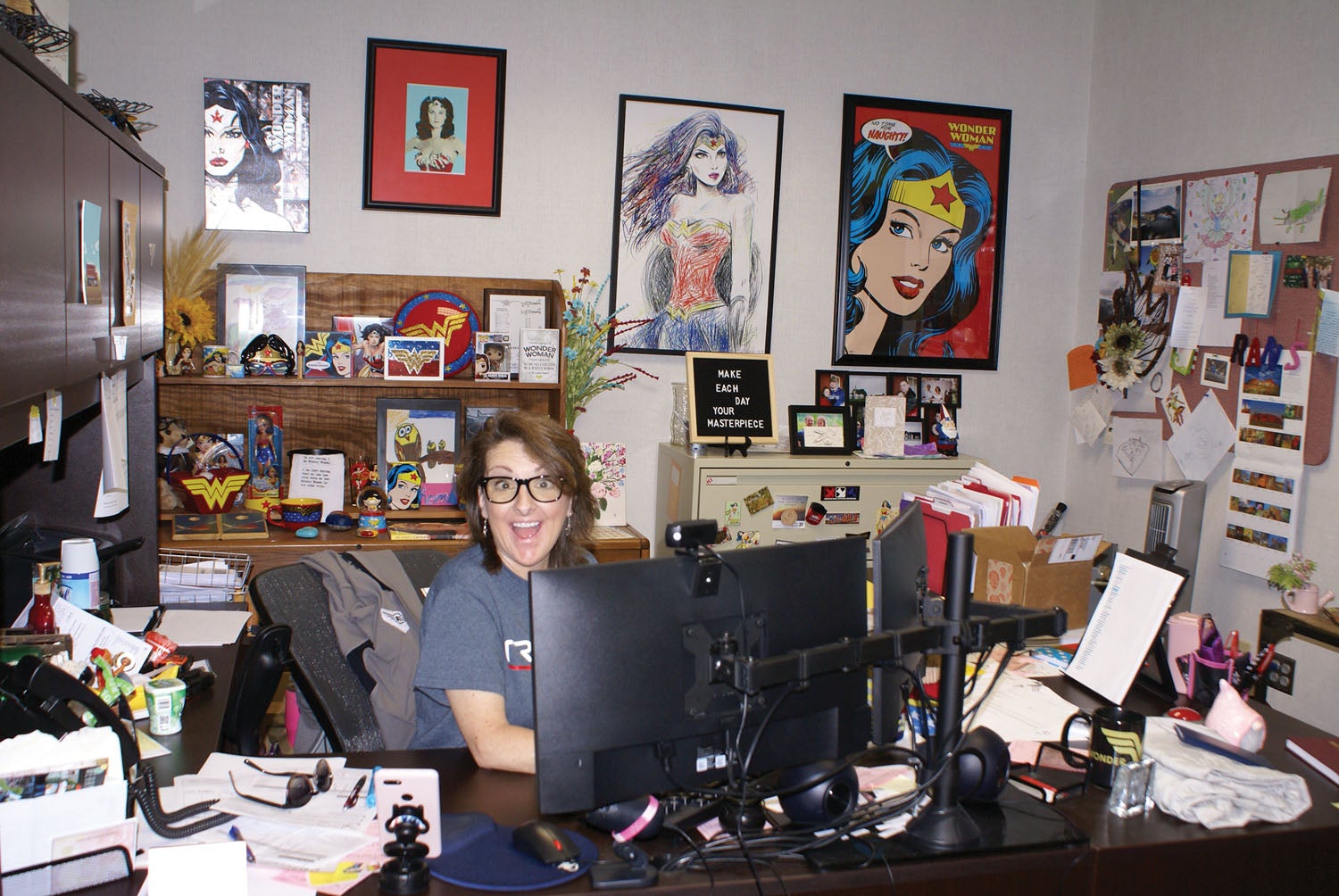
More Considerations
Now we had to work out our transition training. Since there are not too many flying S-21s, we called the RANS factory in Hays, Kansas, and discussed options with Michelle (Shelly) Schlitter. She suggested we come back to Hays and have Randy do the training. The insurance company would have to approve Randy and he’d need to follow their guidance as a starting place, but we were able to get all that worked out. We were each to have 3 hours of training from Randy, and our logbook notes the training as orientation to the S-21. We were set up for a nice road trip and scheduled to fly with Randy.
The anticipation was great on the drive to Kansas. We left at the crack of dawn from our home on the western edge of Nevada and were able to make it to Rawlins, Wyoming, for the first night, which allowed us to roll into Hays early enough the next day for us to grab a bite to eat with Randy and Shelly, and for Mike to get his flight in. Shelly is the behind-the-scenes glue that keeps that place ticking.
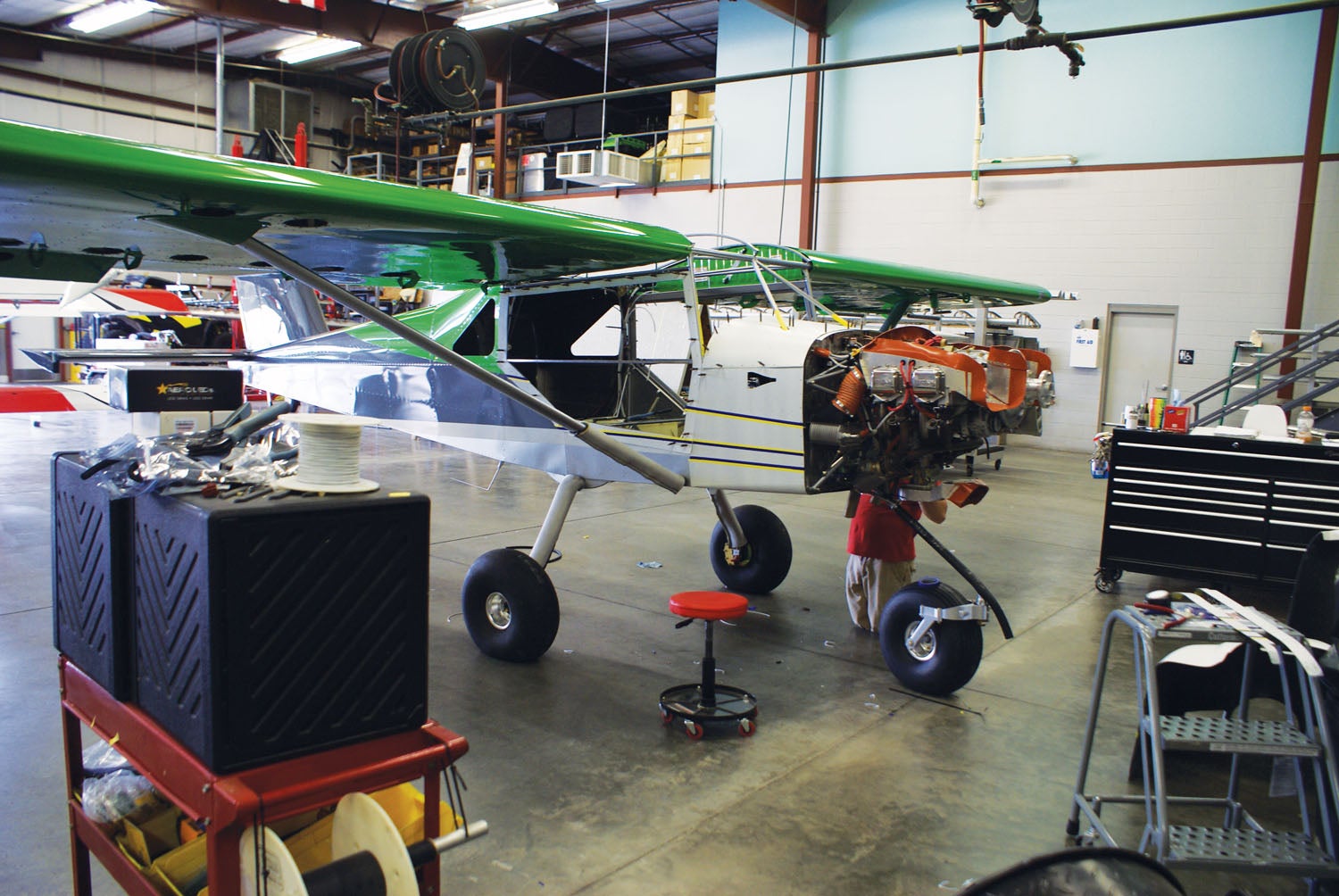
Mike got to fly the red/black/white S-21 that’s the taildragger with the Titan IO-340. Mike has many years of experience with taildraggers, and the “extra load” was handled well with the more powerful Titan engine, which will be similar to what we built. He had a wonderful time with Randy and was able to get the training done that afternoon.
The next morning, I was psyched and ready to go flying. I anticipated arriving at the factory, ready to go at 8 a.m., but it was socked in! Who knew that Kansas could be fogged in? Finally, around 10 a.m. the fog started breaking up, and blue sky was appearing.
Randy and I took out the yellow/gray S-21 that has the Rotax and tricycle gear, which I am more comfortable with. After settling in and briefing, Randy did the takeoff from the grass strip behind the factory, got it climbing and trimmed out and handed the plane over to me. He wanted to show me just how stable the plane is in flight.
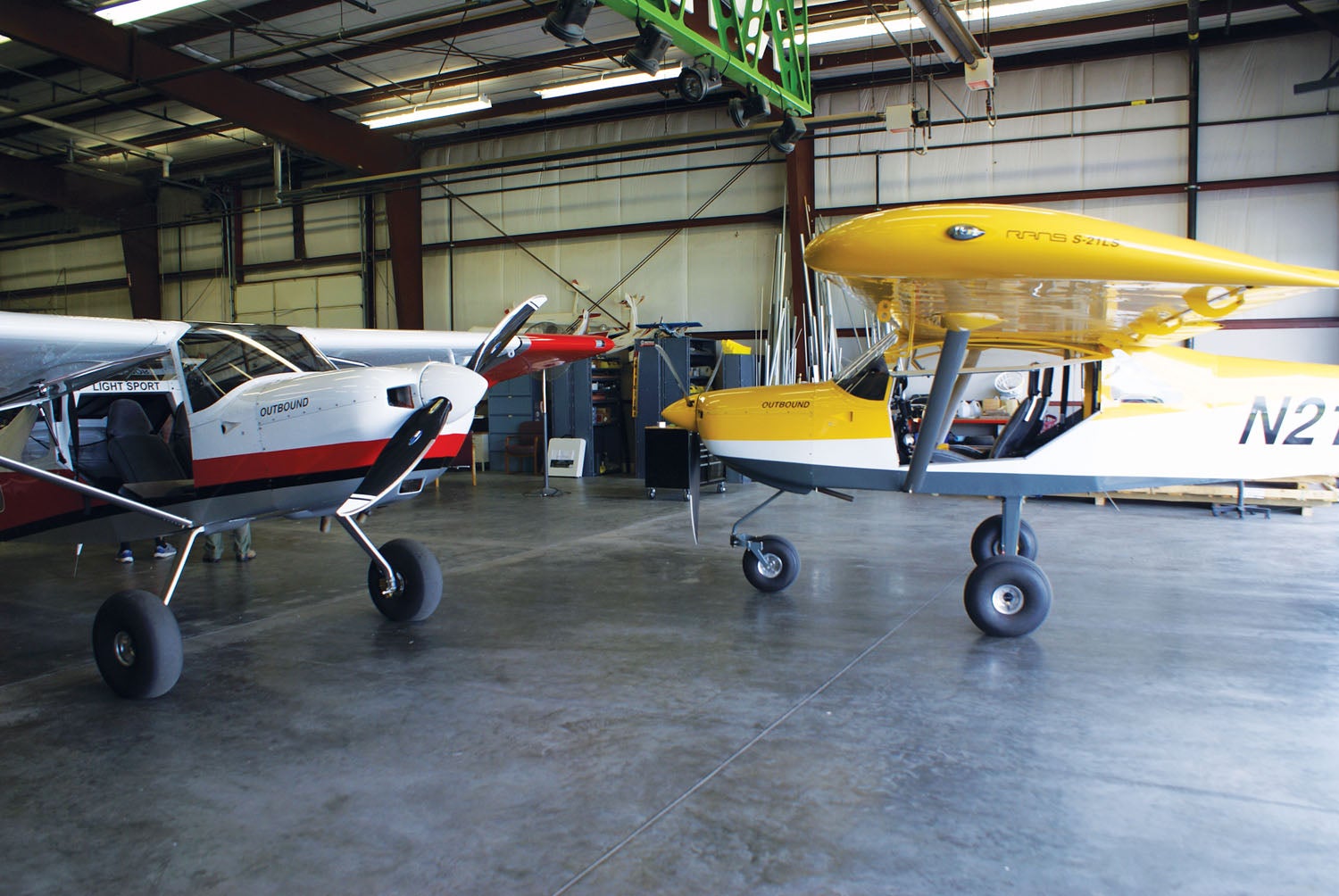
The regional airport was closed due to their annual crack-sealing maintenance, so we went to a local grass strip for our practice. We did a bunch of takeoffs and landings. It was really cool getting oriented to the S-21 with the person who had designed it. I had never landed on a grass strip before and loved it!
At first, I was flaring too early and slowing the plane up too high above the ground. Randy wanted me to maintain 65–70 mph on the approach, then flare about 5 feet above the ground and hold it off, nose high. On the takeoff after the second landing, Randy had me hold it about 5 feet off the ground to get the idea of the sight picture for the flare. After that, I had pretty awesome landings.

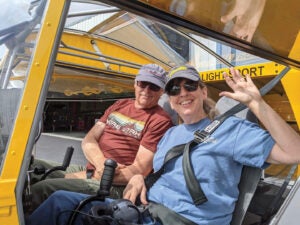
We also practiced turns and stalls. Unlike other airplanes I’ve flown, the S-21’s stalls were truly just buffeting, and the recovery was not much of a big deal, either. Pull into the buffet, relax to neutral stick and there’s your recovery. Keep holding the stick back and you get to porpoise along in a pretty amazing fashion. Very easy to handle.
Another huge plus that I love about the S-21, besides being stable and an all-out fun plane to fly, is the amazing visibility. It is spectacular to be able to look down at your side through the doors and clear above with the skylight. Great experience all in all. When back on the ground, it was a joy to have Randy sign off my logbook for my orientation.
Back Home
Our flying refresher complete, we tended to the final prep items before inspection. We were finally ready to do the first start of the engine. Oil had been in the plane for a while, and no leaks were noted. Oil pressure was checked and reading on the engine monitor (GRT’s EIS), and hydraulic fluid was already in the brake lines. We loaded her up with fuel to conduct a fuel-flow test, which is done by disconnecting the fuel line at the firewall and measuring the unassisted flow rate. Based on calculations, we needed 43 gph, and we got enough to ensure that the engine would have fuel available at high power and a high angle of attack.
All systems appeared to be go, so we hooked the plane up to our pickup truck as an anchor and started her up for the first time. The plan was to run it at idle for about a minute and make sure all the instruments were sensing appropriately—namely oil and fuel pressures—and shut her down.
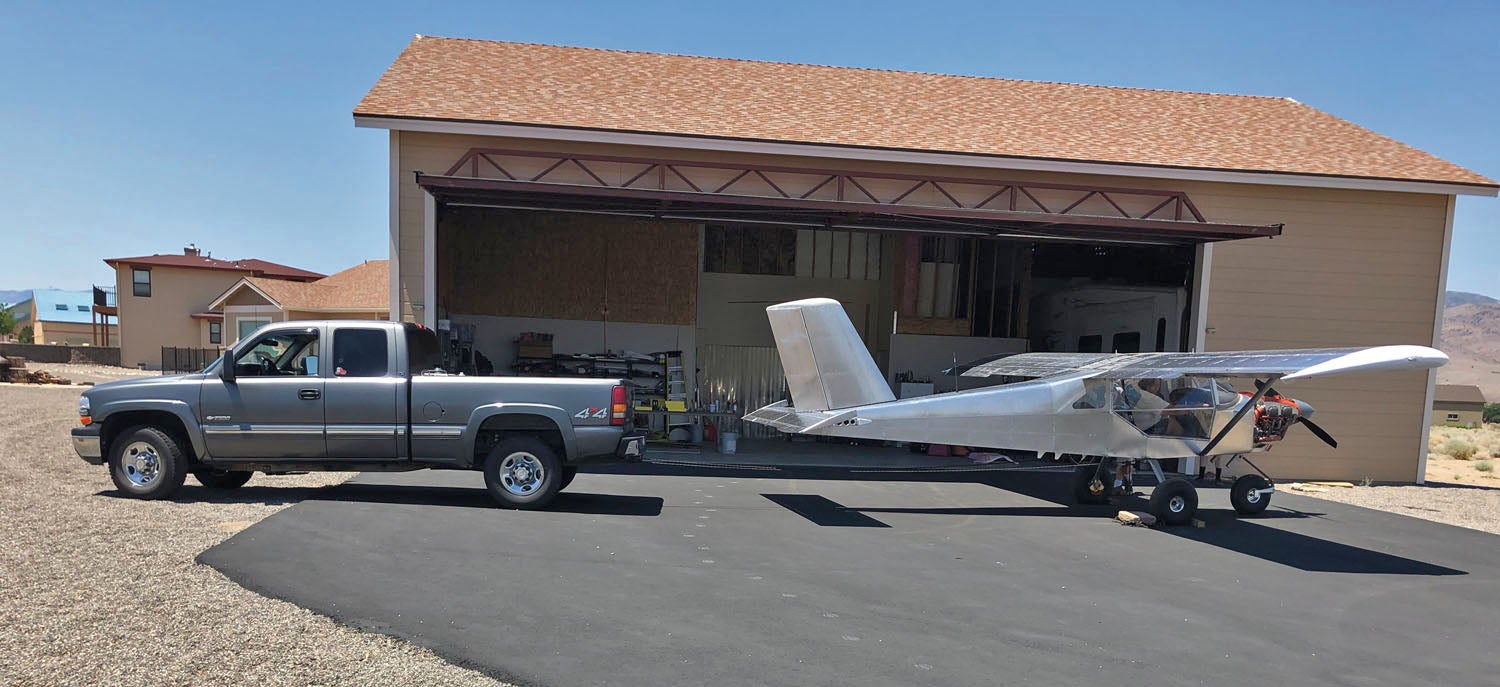
Mike started it, and you could hear it idling really fast. That was no idle. He shut it down pretty quickly, and the first words out of his mouth were, “Well, that was idle.” Only it was actually 1900 rpm. He had a bit of adjusting to do, but after a couple of test runs, the idle was fixed and where he wanted it. We were then able to do the taxi test to check that the brakes worked as expected. Taxi testing went without a hitch. It was exciting to see the plane finally powering up and moving!
Getting Close
We were now closing in on being ready to schedule the inspection with Dilly. We scheduled about one week out with Dilly, keeping in mind that we had a few things remaining to be done on the plane—namely all the labeling on the instrument panel and various other areas, plus installing and final trimming of the doors. We also decided that a “Post-it” party was a pre-inspection endeavor that we wanted to pursue.
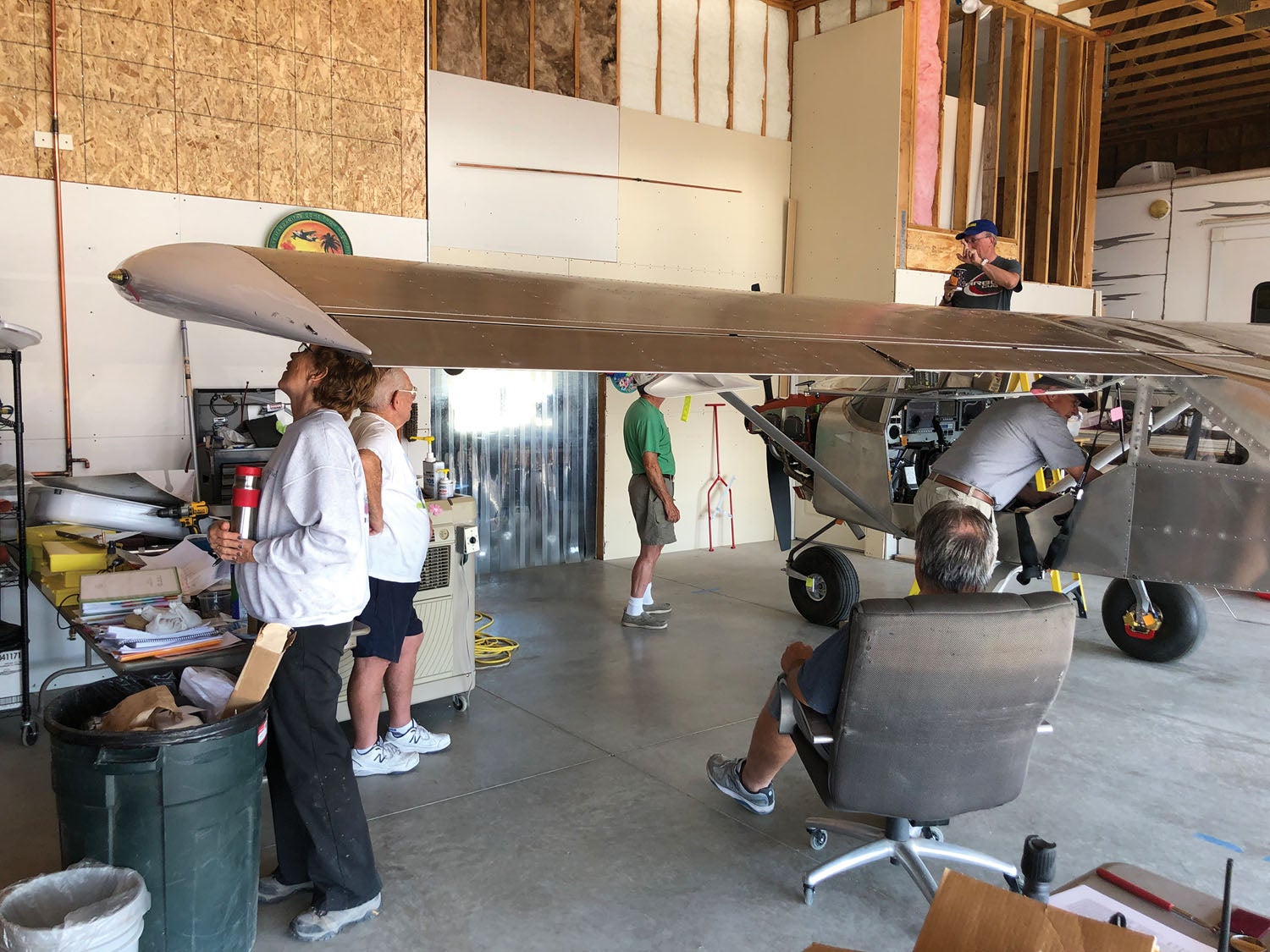
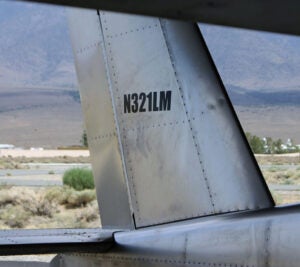
Three days pre-inspection, I invited local plane builders, about eight neighbors and one friend from Minden who flew his RANS S-20 over, to come and do their own inspections of the plane. Each was asked to comment on a Post-it note of their own color. Enticing them with donuts and coffee works well, too! Our neighbors were totally up for the idea and were eager to see the plane—we all had a great time! It was fun seeing everyone looking all over the plane for safety issues; they were on ladders on the top, riding a creeper under the belly and were armed with flashlights and mirrors. When you are the one working on your plane, you won’t pick up on everything because you see it day-in and day-out and may overlook something, so this was a great idea to get as many eyes on the project as possible from experienced builders to see the build from their perspective.
Some of the feedback noted a few short bolts on the wing struts and nosewheel—not enough thread protruding through the nut—that we later decided to replace. Another person suggested that the PK screws going into the inspection plates be flat-tipped and not sharp, so I ended up grinding off the tips of all those screws before we put it all back together. (After all, no one wants to reach into a wing and get snagged on a sharp screw tip, which is the same reason you take care with safety-wire ends.) There were a few other notes about the aileron cable tension and the number of threads in the area where the elevator rod hooks up. Each note was considered and taken care of. Some notes were suggestions/ideas we may want to consider, like rubber edging around the Plexiglas of the door to reduce the impact on head bumps. There was a classic sticker that had an arrow pointing to a dead bug! (Live bugs were on backorder from the factory.) All in all, it was a great idea and got us ready for inspection day.
Repairperson in Charge
Mike and I had decided that I was the person to be named on the Repairman’s Certificate due to the fact that I am 10 years younger than he is and that we co-built the plane. I felt a bit of an extra burden on my shoulders because of this, which made me nervous for how the inspection would go. The Post-it party was a great prep seeing what everyone was looking at, and I benefitted from the conversations with fellow builders. We received many positive comments on the quality of the build and that they saw no “show stoppers” for the inspection. In many ways, I think this helped me realize just how much I did know about the plane and that I truly had learned a lot during the past two years spent building it with Mike.
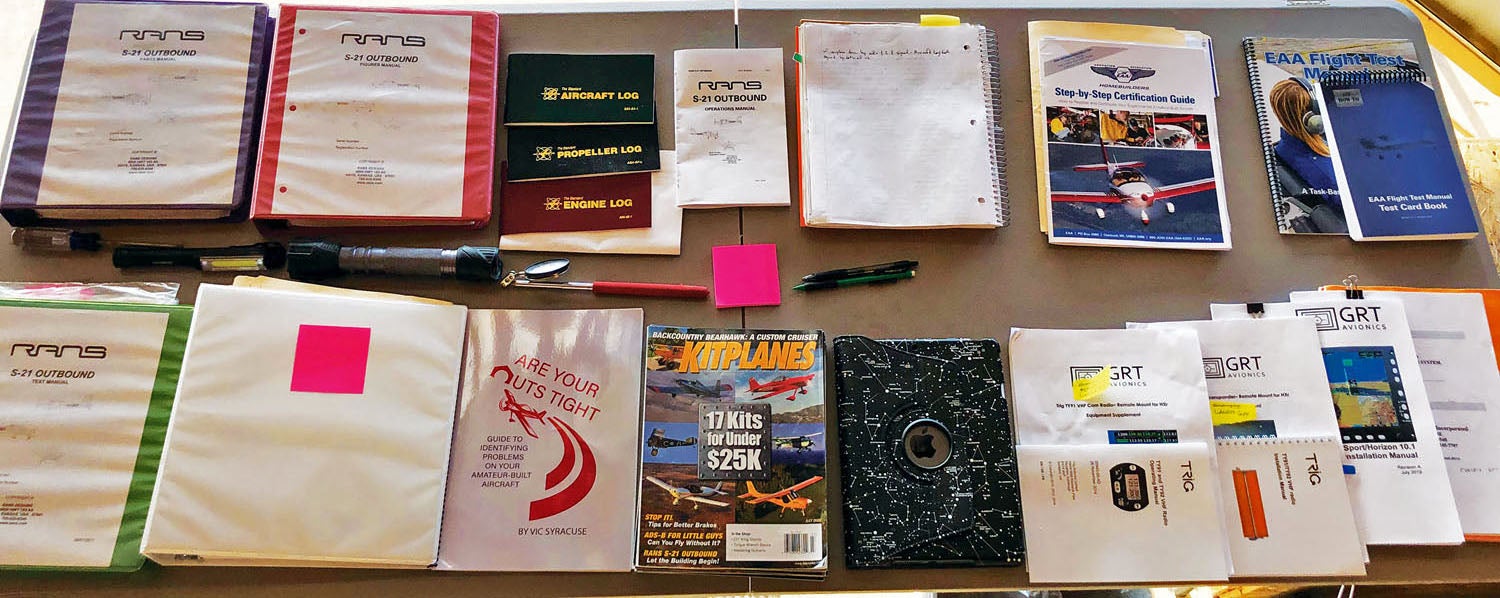
The big day finally came for the inspection. We had prepped not only the plane for inspection but also had the worktable set up with all the build manuals, build log and EAA Flight Test Manual as well as the test-card book. (The EAA manual is tremendously helpful.)
Dilly showed up at 6 a.m. from the Sacramento area with the idea that since it was to get up around 100° that day, he would beat the heat of the day with the inspection. He was amazing! He was very genuine and knowledgeable. He took me through every aspect of the plane, asking all sorts of questions, and I was taking notes of helpful tips as we proceeded through the inspection. Some questions I knew the answer to and some I didn’t. He was extremely respectful, and when I didn’t know an answer, he was extremely willing to go through and teach me along the way. He also gave me several hints as to what to look for on annual inspections and what the wear would look like in different areas.
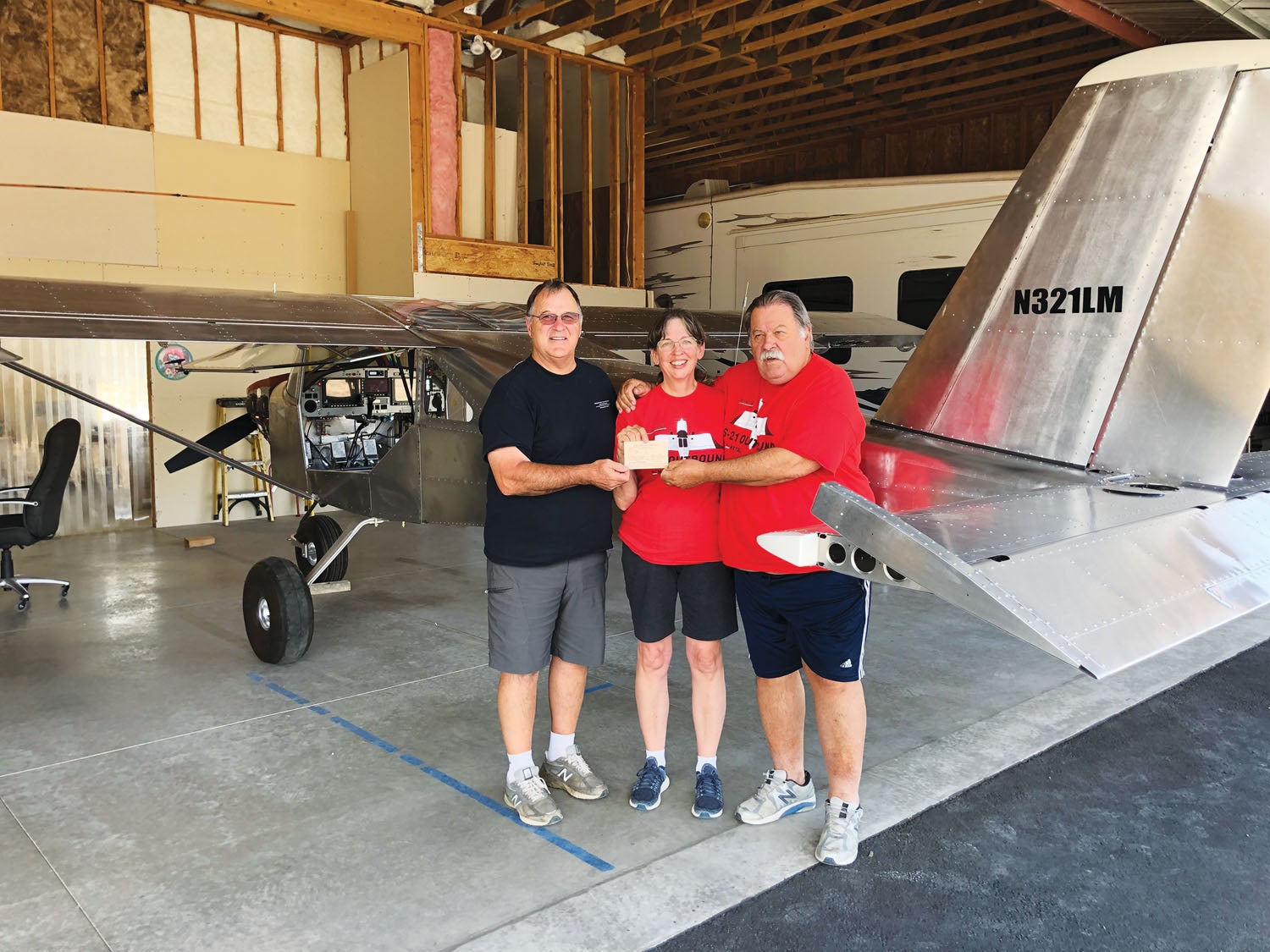
We spent 4 hours on the inspection and another 2 hours on the completion of the paperwork. He was extremely thorough. He agreed with the bolt replacement areas that were identified during the Post-it party and was fine with the fact that we had ordered them up and would be replacing them prior to flight. I was extremely thankful for his instructor role toward me, sharing his knowledge, experience and all his stories. I could see why Mike wanted to get Dilly to do the inspection.
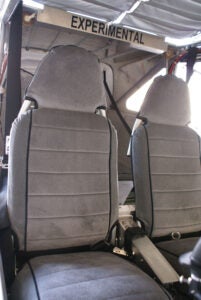
It was a surreal experience to get the final sign-off and know that we were considered airworthy! It was time to put our Humpty Dumpty back together again after the inspection and ready for flight. In addition to the usual post-inspection reassembly like the inspection plates, we had the wing fairing to install on the front of the windshield where the fuselage meets up with the wing.
There were a few tips from Dilly that we took care of and, of course, installed the crucial bolts when we received them in the mail. We had quite a bit of interior work to be done to get it together for flight, including installing the closeout to the tail cone, baggage area, cargo net and seats.
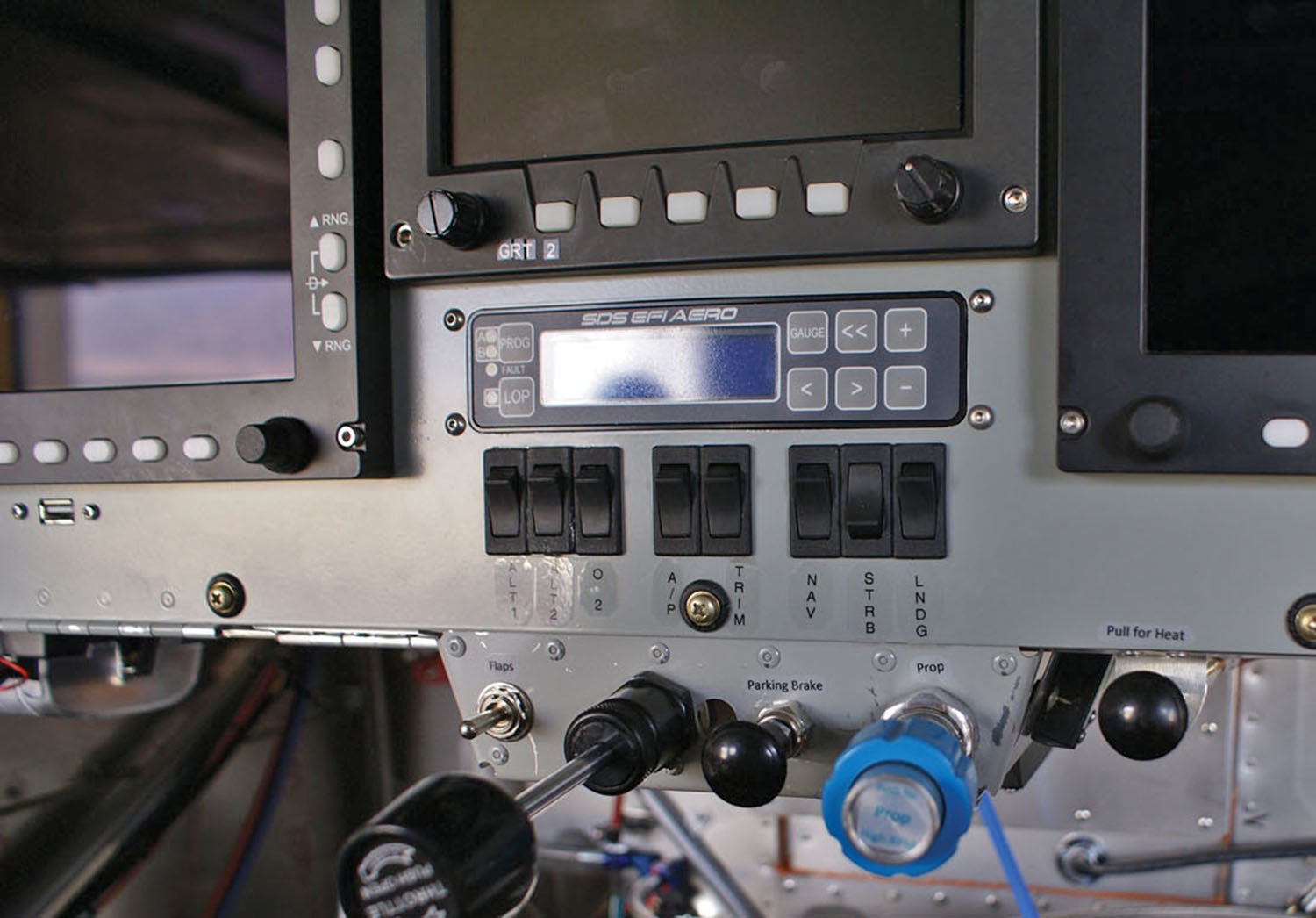
But Who?
There were decisions that needed to be made regarding who would do the first flight. There is an obvious risk in flying a plane on its maiden voyage. Who was to do it? Mike, with all his heart, wanted to do the first flight and is capable, but is he the right person for the job when you have a neighbor like Paul Dye? Paul has done multiple first flights, probably hundreds of hours flying in the last year alone and is calm and cool in emergency situations. Plus, he offered to do the first flight. It was difficult for Mike to let go, but he much appreciated the expertise Paul had to offer. We decided that Paul was right for the job and went forward with those plans.
I was assigned to getting all checklists together and printed on card stock. Since this is a newly overhauled engine, it needs to be broken in, which means running the engine hard for at least an hour. There were many things to take into consideration for a proper break-in, like density altitude. Our field here in Dayton is at 4400 feet msl, and the weather has been on the hot side. Paul assigned me to research the maximum temperature allowed for takeoff so that we could still get 75% power at 1000 feet agl. I came up with less than 70° F. This meant early morning was going to be our only alternative.
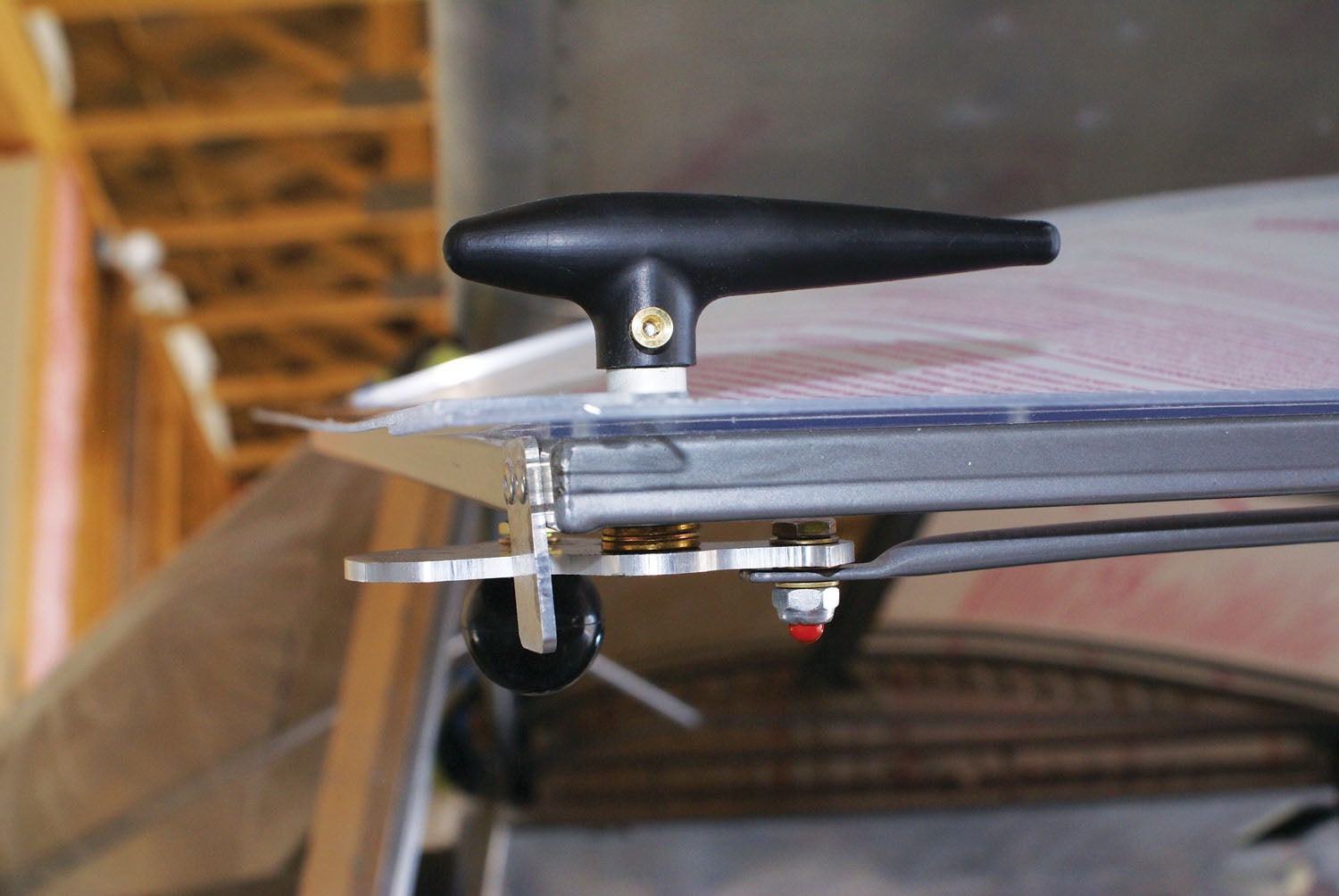
We met the evening before the flight at our house for dinner and to brief the plan for the flight the next day—all our duties as assigned. We had two photographers, two ground members with handheld radios for coms with Paul during flight plus note-taking and the other for local air traffic monitoring. We reviewed the flight plan, which consisted of getting Card #2 of the EAA Phase I completed with 30 minutes of hard runup time for break-in. There were also specific weather and wind considerations, which, if not met, would suspend the first flight. Paul made it clear that each crew member had the right to call the flight off at any time if they were not comfortable with the flight or safety. All was dealt with in a very professional and safe manner.
I had restless sleep the night before, knowing my responsibilities for the success of the flight. It is strange anxiety because you hope for all to go well, but at the same time, you know that it is the first flight, and there are always things that happen that will need to be taken care of and debugged. You don’t know what they will be.
The next morning at 5:45, the team was assembled and ready for wheels-up at 6 a.m. Louise and I were on radios with the ground com check complete with Paul. Barry and Jed were the photographers, with them deciding Jed would do a video of the flight with some stills, and Barry would get the still action as it happened. Mike was on tap for technical knowledge if Paul had any questions on the flight and held down the fort with being the emergency vehicle driver if needed. The weather was right. The team was ready. It was a go.
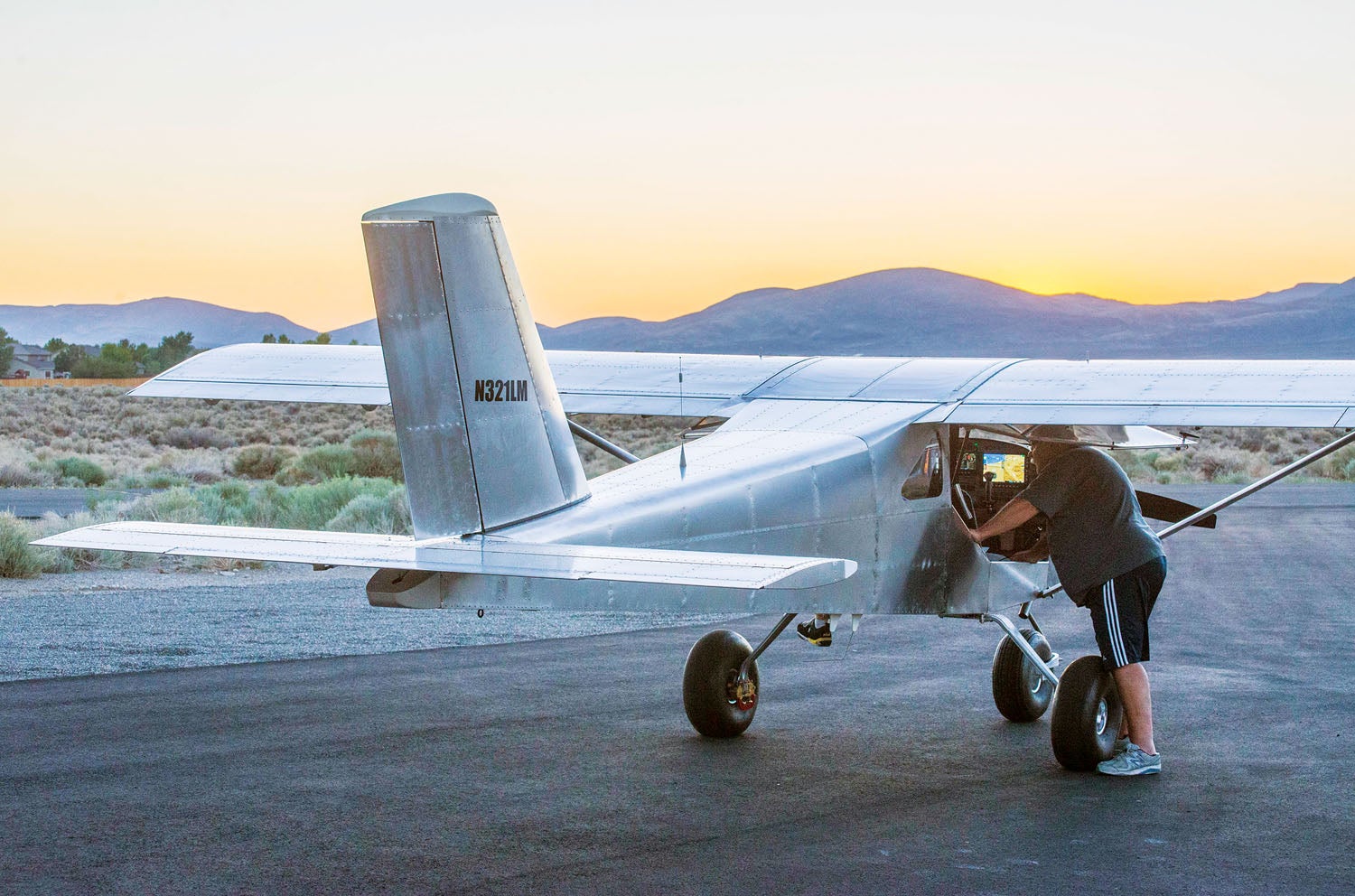
And Then It Happens
Paul started the plane and taxied out. (He had done a taxi test the day before to get a feel for the plane and review the instrument panel and checklists.) Run-up was a success at the west end of the field, and it was time for takeoff. He hit the power, and he was off. It seemed superfast (I bet less than 500 feet). It sounded strong and so steady—what a spectacular takeoff. I heard no call from Paul at takeoff. Both Louise and I tried communicating with him, without success. First glitch: We had no communications. After several minutes of attempting to reach him and not knowing if he could hear us or not, Louise advised him he was NORDO, and we quit attempting contact. Louise concluded that Paul would probably continue flight knowing that we had a radio on the ground to communicate with traffic as needed.
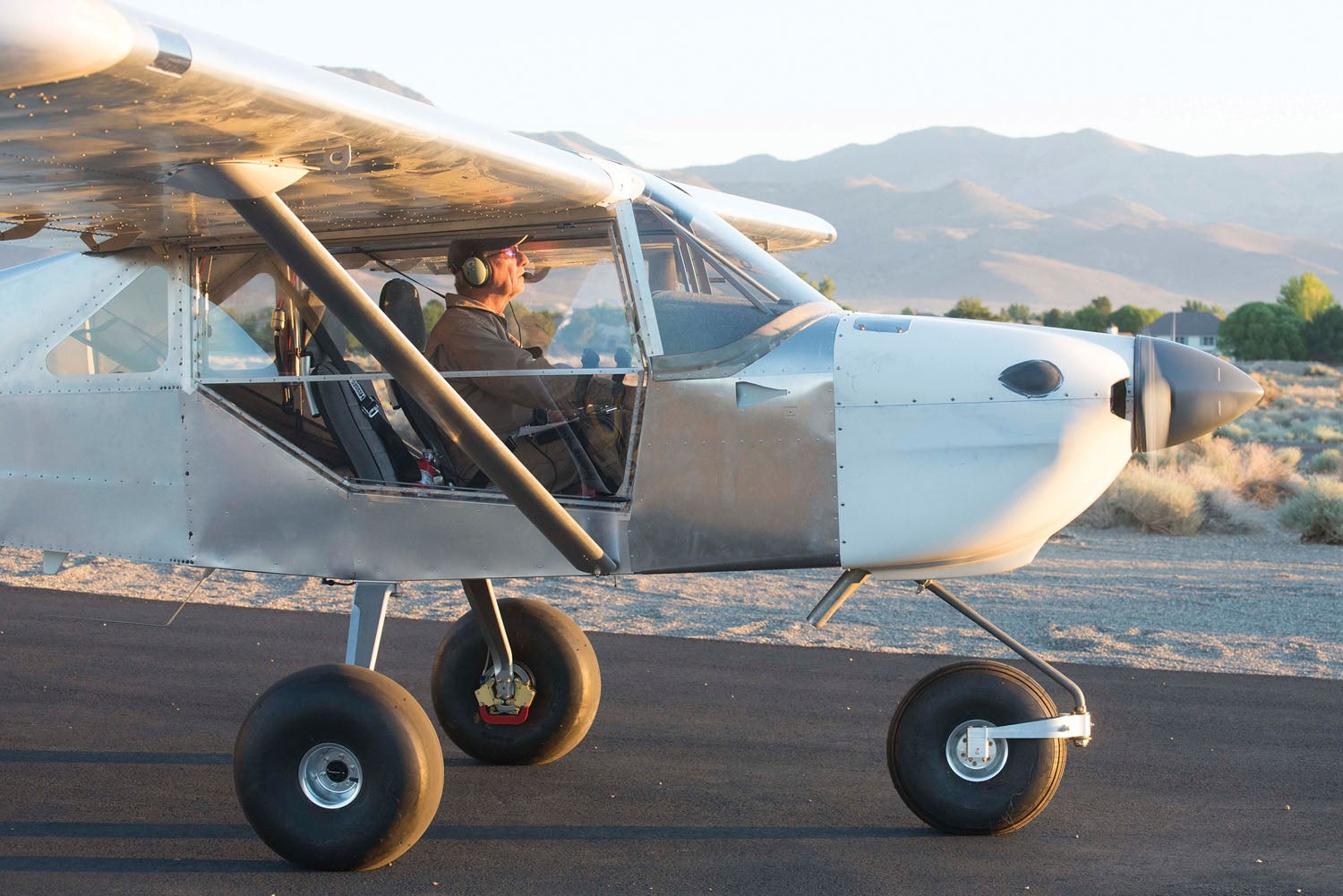
Paul circled the field several times, did some Figure 8s and then gained some altitude to practice a few stalls. He was flying about 18 minutes and came into the pattern for landing. I figured since he didn’t do the 30-minute flight as planned, there were other issues we were not aware of. Paul came into the pattern perfectly and did a great landing. The plane, from all appearances, performed well.
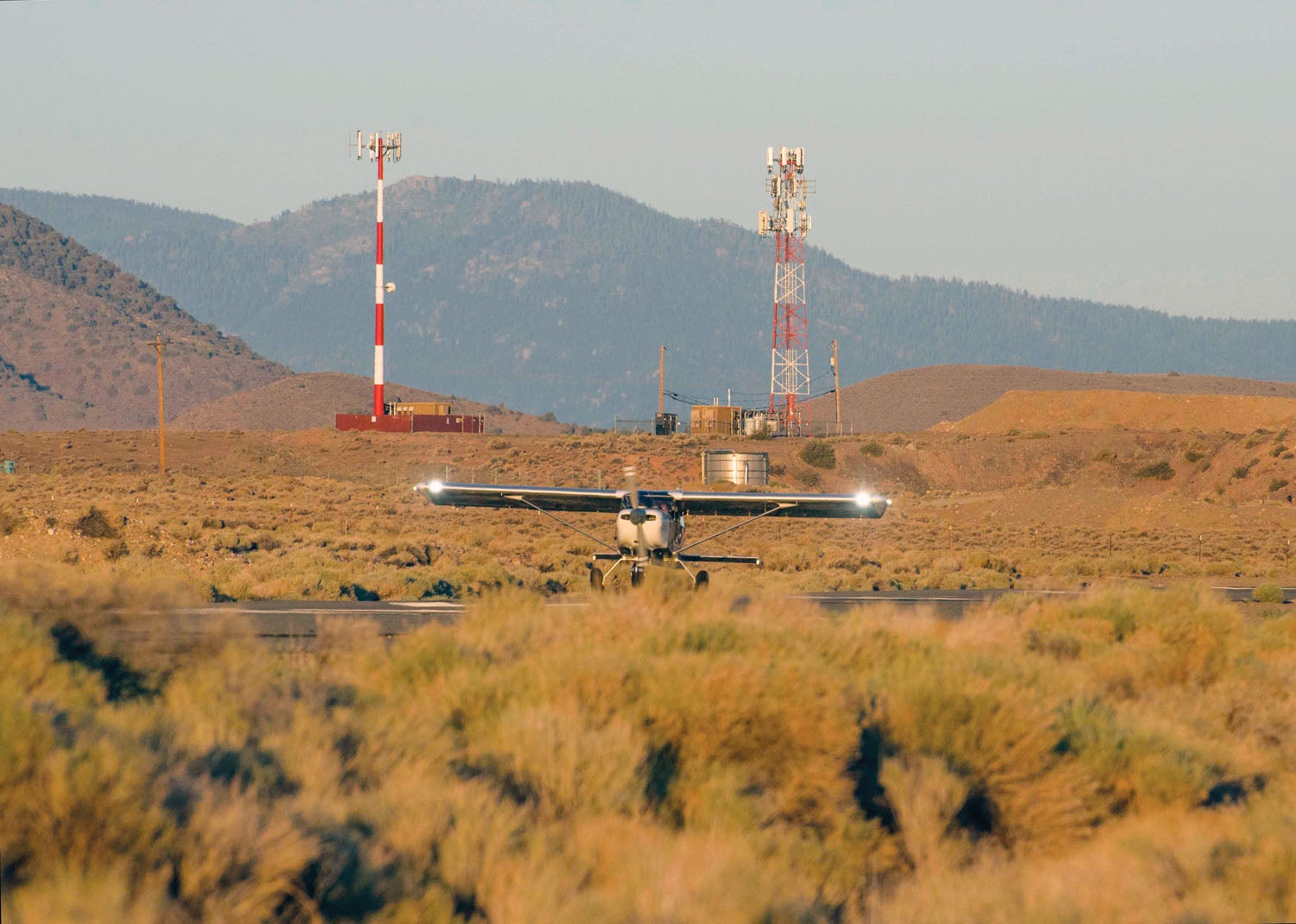
When on the ground and we were able to talk to Paul, he advised us of several issues that would need to be addressed prior to a second flight. I took notes while Paul rattled off the data he had recorded during the flight and what the issues were.
- The cylinder-head temps were over 400° on two cylinders the whole flight, even with reduced power. (Paul reverted to 18 inches of manifold pressure and 2400 rpm to try to keep them in check.)
- Alarms were going off continuously on the EFIS. (This is a good time to note that setting the alarm parameters for first flight should be done carefully and understanding that the engine is likely to run hotter than it will once broken in.)
- Coms were inoperative. (Obviously.)
- The pitot-static system was good. (Phew!)
- The propeller control was good.
- Overall, the airplane flew straight and steady. Roll, pitch and yaw good. (Such a relief to hear this.)
- It stalled at 49 mph indicated, clean. (Sounds about right.)
- The starter-enable key switch twisted greater than 90°. (Hmm, that’s not right.)
Paul’s flight was just 22 minutes, mostly owing to the high engine temps. He concluded that while there was a lot to chase down, the airplane did fly.
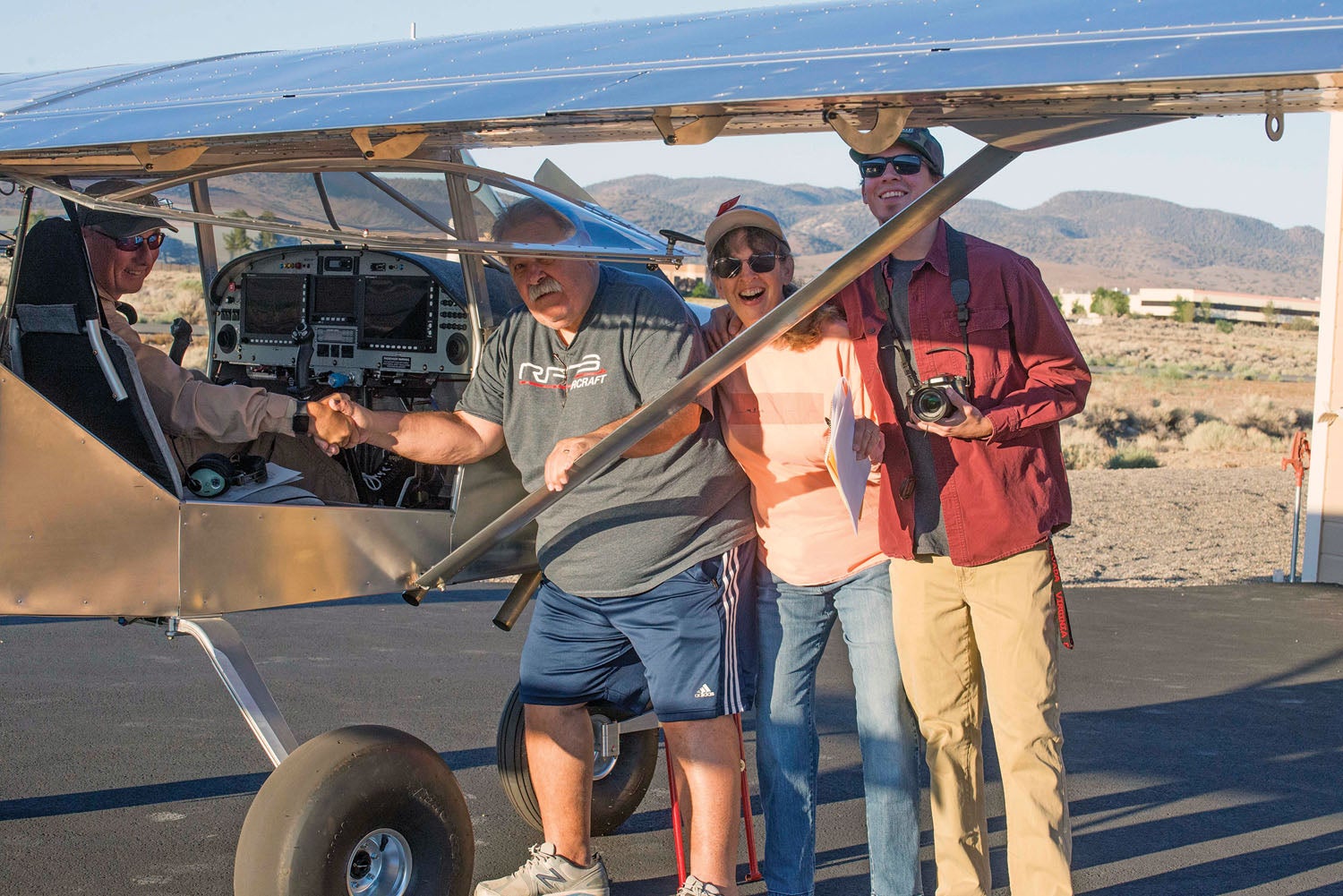
A Partial Postscript
Mike spent the next few weeks working through the squawk list. The com failure was the result of a coax connector that had come undone at the radio end; easily solved. Mike also realized that the transponder wasn’t working, and through some troubleshooting with GRT, discovered that the proper setting for the “squat switch” wasn’t clearly described in the documentation. Changing the transponder settings to use the GRT GPS and AHRS data to know when the airplane was flying—instead of a squat switch, which we didn’t have, should fix that. (Mike grumbled more than a little that while GRT’s hardware is good, its documentation isn’t what it should be, and isn’t as good as it was when he last worked with the equipment on the RV-10.) He fixed the EIS alarm situation by turning them all off except for low oil pressure and high CHT, as suggested by GRT.
Mike’s initial attempt to handle the high CHTs was to enlarge the air outlet area on the bottom of the cowl and retard the ignition advance to 20°. As it turned out, this was not quite enough to correct the high CHT issues, so a bit more creativity was required. He concluded that the air ramps initially made were not adequate and needed a bit more bolstering up, so more foam and fiberglass work was done, plus he added a couple of “dams” (small fabricated metal pieces) to go in front of Cylinders 1 and 2 to force some air back to the hotter cylinders.
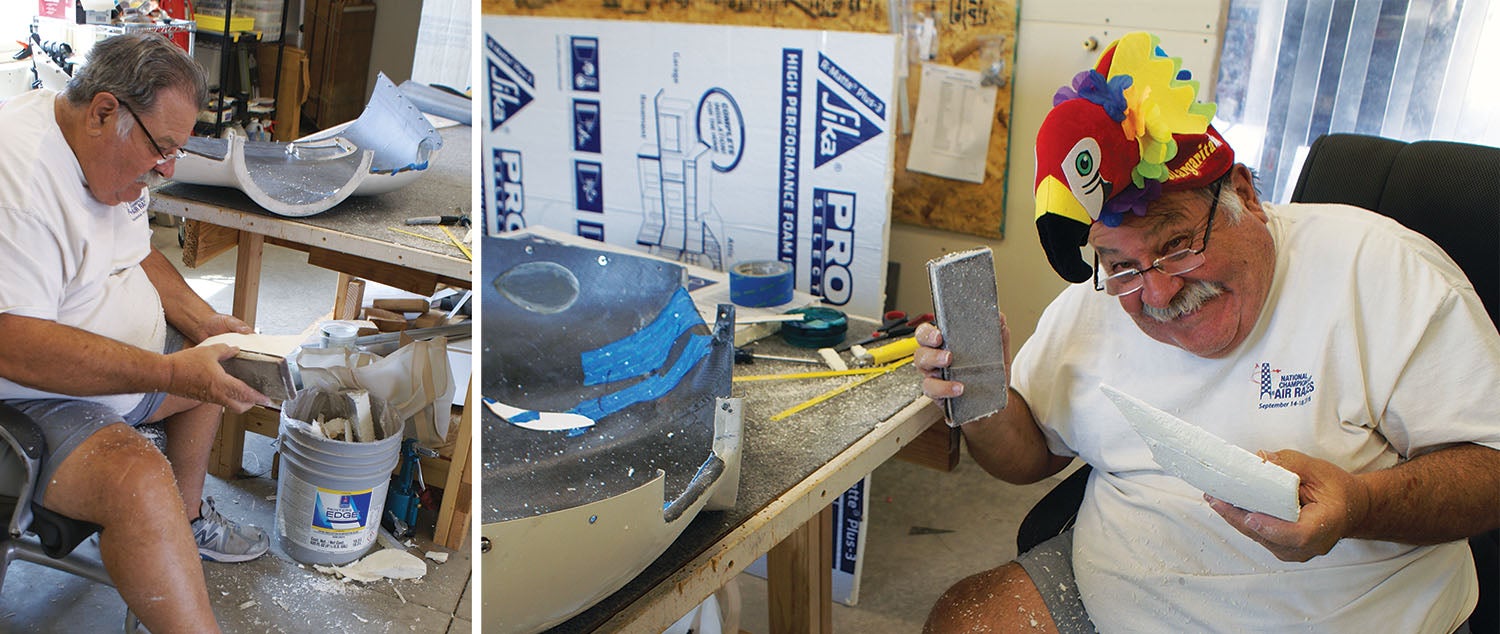
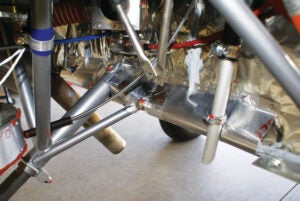
He also added a curved deflector inside the cowling where the firewall turns into the belly. I had never seen this trick done, but apparently it is a common fix in other Experimental aircraft. On the third flight, CHTs seemed to be stabilizing (350–370°) with Cylinder #1 having temps reaching over 400 at times and consistently running about 15° hotter than the others. He cut down that dam a bit for more air to that front cylinder. No doubt, the taming (and balancing) of the CHTs is an iterative process that is unique with the aircraft. We’ll keep working on it.
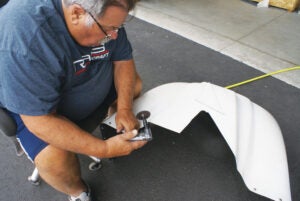
When Paul was landing after the third flight, I heard him announce as he was on final that it would be a “no-flap landing.” I was amazed that he was confident enough on his third flight that he would try a no-flap landing. Come to find out, the electric flap actuator had failed. Ugh…yet another thing to troubleshoot and/or replace.
Getting all the squawks out of a homebuilt aircraft is not a simple task. As much as I’d hoped for a trouble-free airplane right from the start, I understand now that flight testing is like this. You hope the big items all work—the engine runs, the wing does its thing—and then you discover other problems and work through to solutions. I’m told every airplane goes through this and not to worry too much.
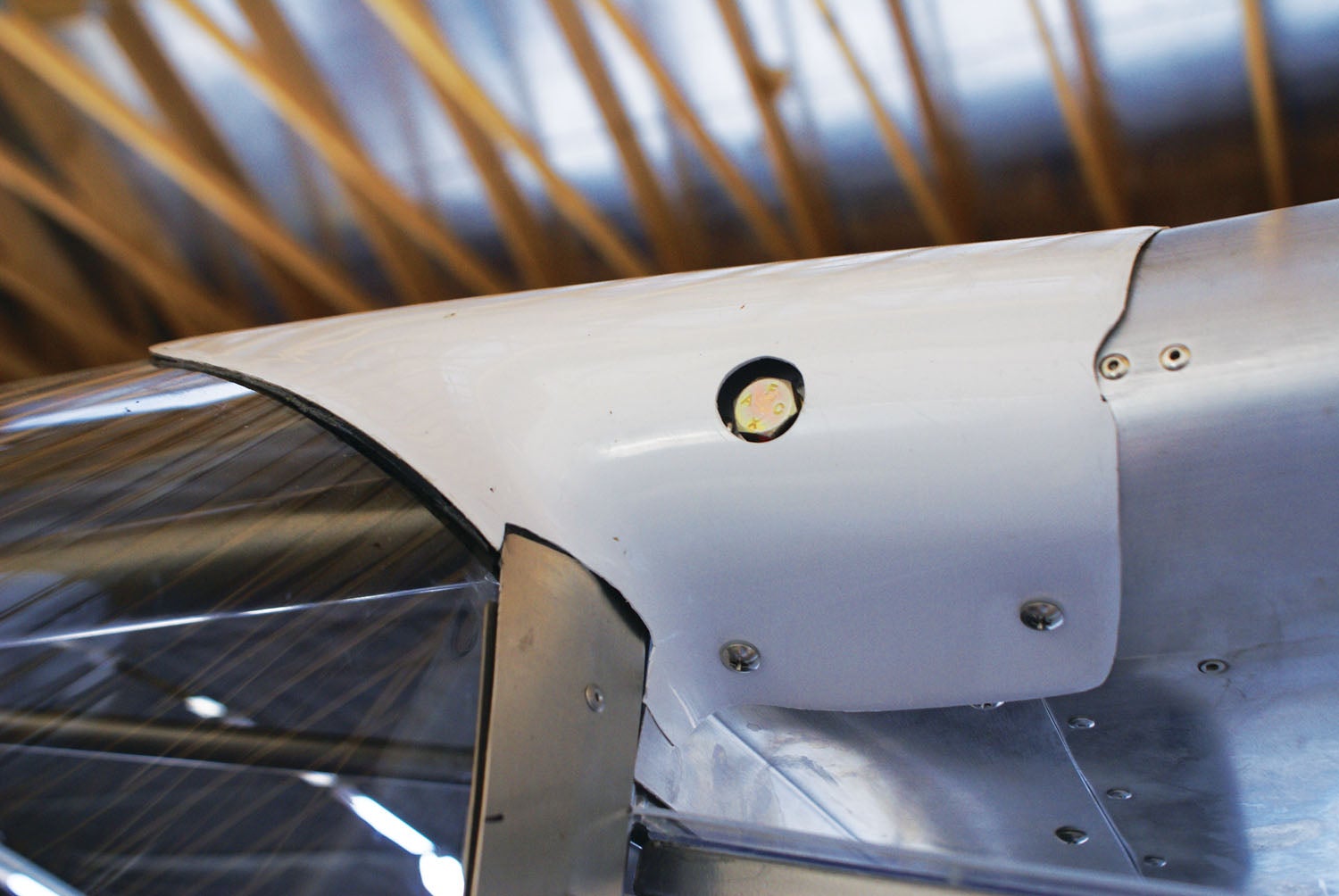
The End, for Now
We’ll leave this series to rest while we work through Phase I flight test and line up a painter. When that’s finished, I’ll report back on what we found, what other issues we might have found during Phase I and early into the post-test-flight phase and more general impressions of the S-21 as a flying airplane.
Before I go, I want to stress that the build experience for a novice is an education in many ways. The knowledge I gained will be very valuable. Having the satisfaction of doing such an involved project that has been two years in the making and to see the dream of flight happen is indescribable.
The work is not done, but now we are working on a plane and not a project. Times building were not all a walk in the park. It could be very challenging and frustrating. There were days when I couldn’t find the motivation to go out in the hangar and work. There were frustrations working with a spouse on the project and we would get on each other’s nerves, but you push through those times and learn from them. It was not all perfect, but it got done. That makes it all worth it.
We have built our plane!














Why a Titan 340 and not a Edgeperformance EP 912 STI 177 Hp turbo with efci . Weight only 68 Kg